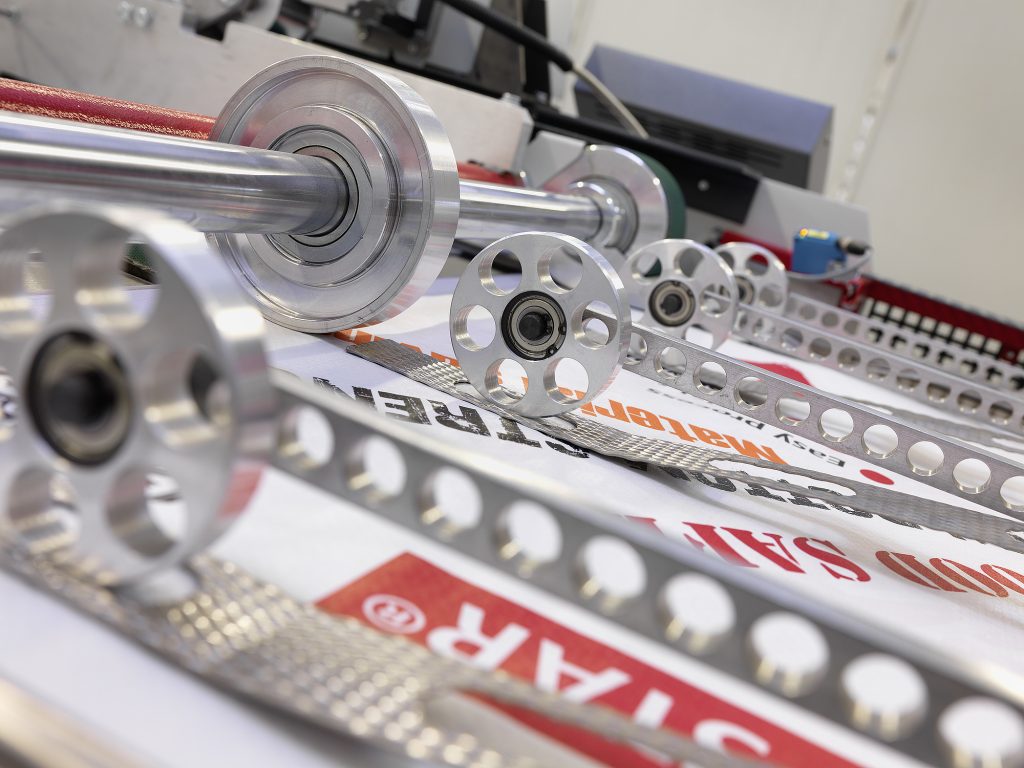
- Section 1: Printed Woven Bags – Market Dominance and Key Applications
- Section 2: Smart Packaging Technologies – QR Codes, RFID, and Beyond
- Section 3: Case Studies – Brands Leading the Smart Packaging Shift
- FAQs: Addressing Key Questions on Smart Packaging
- Conclusion: The Smart Packaging Revolution is Here
Introduction: How Smart Technology is Redefining Printed Woven Bags
Q: What makes Printed Woven Bags indispensable, and how will smart packaging transform the industry?
A: Printed Woven Bags are evolving beyond traditional packaging into intelligent, traceable solutions. QR codes, RFID tags, and IoT-enabled sensors are revolutionizing supply chains by enhancing product visibility, combating counterfeiting, and meeting ESG demands. For example, a 2023 McKinsey study found that brands adopting smart Custom Woven Bags with traceability features reduced supply chain losses by 22%. This article explores current applications, future trends, and how technologies like RFID are making Printed PP Woven Bags a cornerstone of sustainable logistics.
Section 1: Printed Woven Bags – Market Dominance and Key Applications
Printed Woven Bags, Printed Woven sacks, and Multiple color bags serve diverse industries due to their durability, branding potential, and cost efficiency. The global market is projected to reach $8.7 billion by 2027 (Grand View Research), driven by:
- Agriculture: UV-resistant Printed PP Woven Bags protect fertilizers from degradation. A Kenyan cooperative reduced spoilage by 30% using bags with reflective prints to minimize heat absorption.
- Retail: Multiple color bags with high-definition prints boost shelf appeal. A European coffee brand increased repeat purchases by 18% after switching to photorealistic designs.
- Chemicals: Anti-static Custom Woven Bags prevent ignition risks. A Chinese resin supplier reported zero safety incidents over two years using bags with dissipative coatings.
Table 1: Printed Woven Bags by Industry Demand
| Sector | Key Requirement | Example Product |
|---|---|---|
| Agriculture | UV resistance, Moisture barrier | Printed Woven sacks with PE liners |
| Retail | Colorfastness, Branding | Multiple color bags in Pantone hues |
| Chemicals | Static control, Tear resistance | Custom Woven Bags with carbon fiber weaves |
Section 2: Smart Packaging Technologies – QR Codes, RFID, and Beyond
The future of Printed Woven Bags lies in integrating traceability technologies to meet regulatory and consumer demands for transparency.
2.1 QR Code Tracking Systems
- Farm-to-Fork Traceability: QR codes on Printed PP Woven Bags enable consumers to scan and verify agricultural origins. A Thai rice exporter increased EU market share by 15% after implementing blockchain-linked QR systems.
- Anti-Counterfeiting: Unique, encrypted QR codes deter imitation. A South American coffee brand reduced counterfeit incidents by 40% in 2022 using this method.
2.2 RFID-Enabled Bags
- Real-Time Inventory Management: RFID tags automate stock tracking in warehouses. A U.S. logistics firm cut inventory errors by 35% using Custom Woven Bags with passive RFID chips.
- Temperature Monitoring: Active RFID sensors in Printed Woven sacks track perishables during transit. A Dutch flower exporter reduced spoilage by 25% by monitoring cold chain integrity.
2.3 IoT Integration
- Predictive Analytics: IoT sensors in Multiple color bags collect data on humidity, shock, and location. A Canadian grain supplier used this data to optimize routes, cutting delivery delays by 18%.
Table 2: Smart Packaging Technologies and Benefits
| Technology | Functionality | Industry Impact |
|---|---|---|
| QR Codes | Consumer engagement, Anti-fraud | +15% brand trust (2023 Nielsen) |
| RFID Tags | Inventory automation, Cold chain | -35% stock discrepancies |
| IoT Sensors | Condition monitoring, Predictive | -25% spoilage in perishables |
Section 3: Case Studies – Brands Leading the Smart Packaging Shift
- Agri-Tech Innovation: An Australian fertilizer company embedded NFC chips in Printed PP Woven Bags, allowing farmers to scan for nutrient data. Sales rose by 20% due to enhanced user engagement.
- Luxury Retail: A French cosmetics brand uses Custom Woven Bags with scannable QR codes for AR-powered unboxing experiences (learn more about customization trends here).
FAQs: Addressing Key Questions on Smart Packaging
Q1: Are smart technologies cost-prohibitive for SMEs?
A: No. Passive RFID tags cost <$0.10 per unit, and QR code printing adds minimal expense. A 2023 Smithers report notes SMEs using Printed Woven Bags with QR codes saw ROI within 6 months.
Q2: How durable are RFID tags in harsh environments?
A: Encapsulated RFID tags withstand -40°C to 85°C and IP67-rated conditions. A mining company reported 99% tag readability after 12 months in abrasive settings.
Q3: Can smart features align with sustainability goals?
A: Yes. Recyclable RFID antennas and soy-based inks for QR codes reduce environmental impact. VidePak’s Printed Woven sacks with eco-friendly smart features comply with EU Green Deal standards (details here).
Conclusion: The Smart Packaging Revolution is Here
Printed Woven Bags are no longer passive containers but active participants in supply chain intelligence. From QR codes empowering consumers to RFID-driven logistics, these innovations enhance traceability, reduce waste, and elevate branding. As IoT and biodegradable sensors advance, Custom Woven Bags will become indispensable tools for industries prioritizing transparency and sustainability.
Word count: 1,020